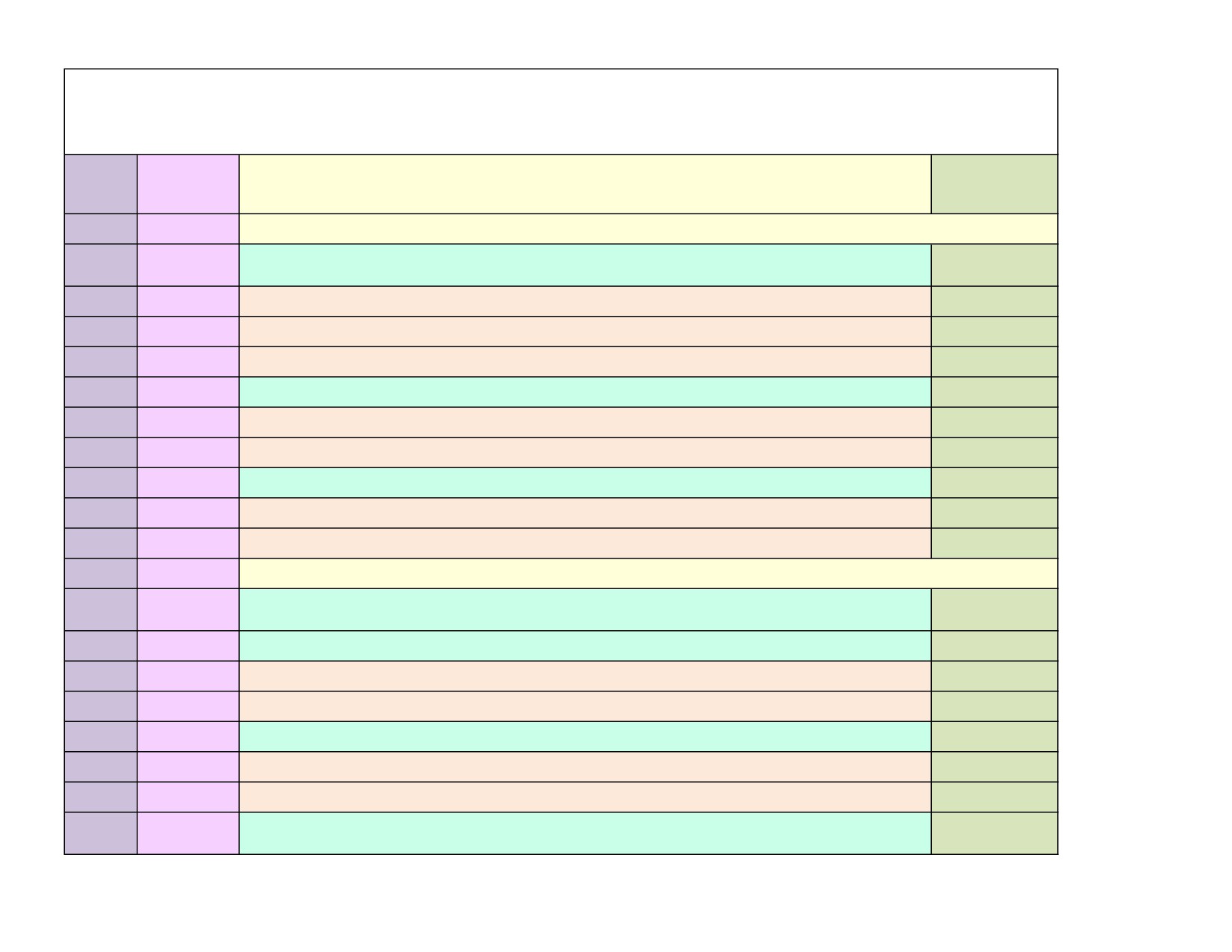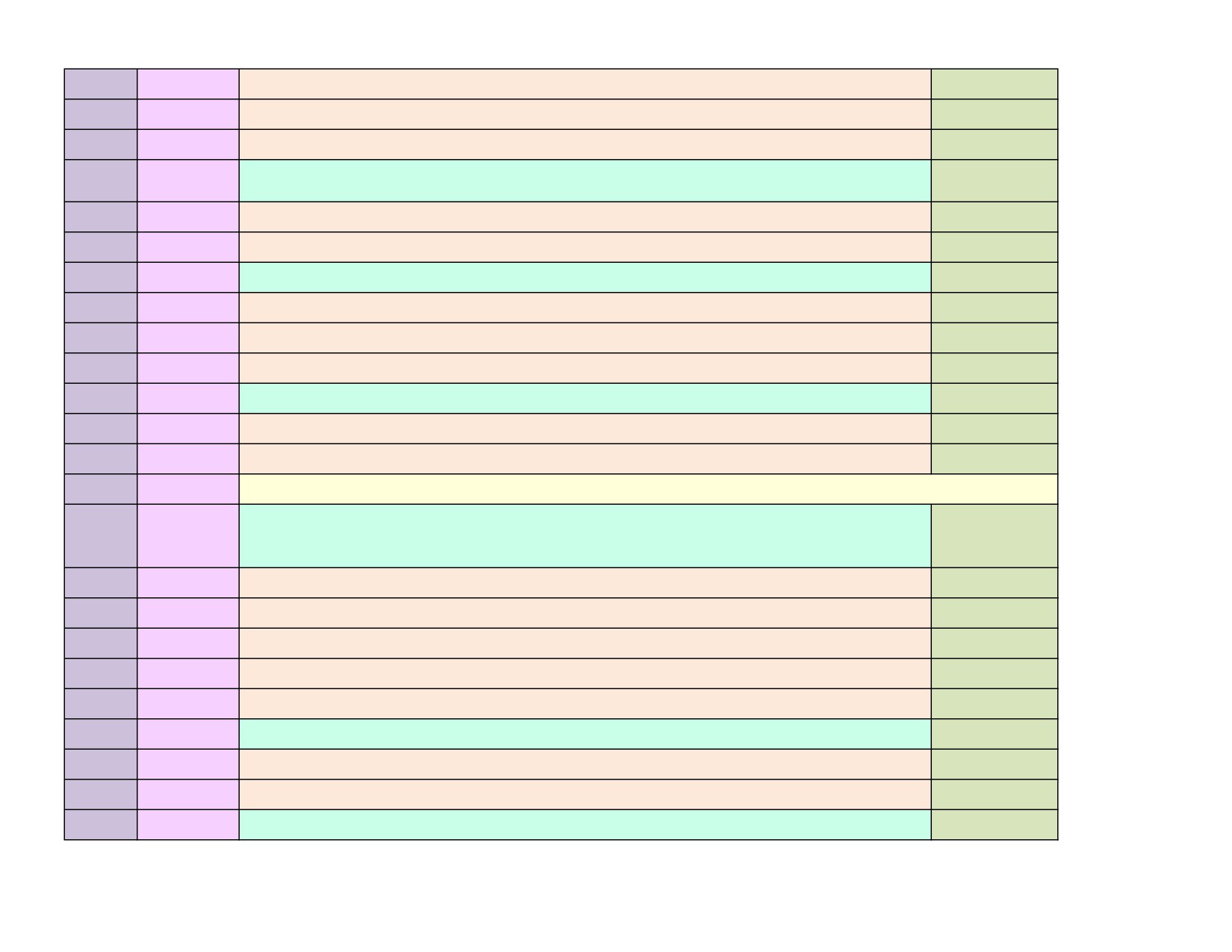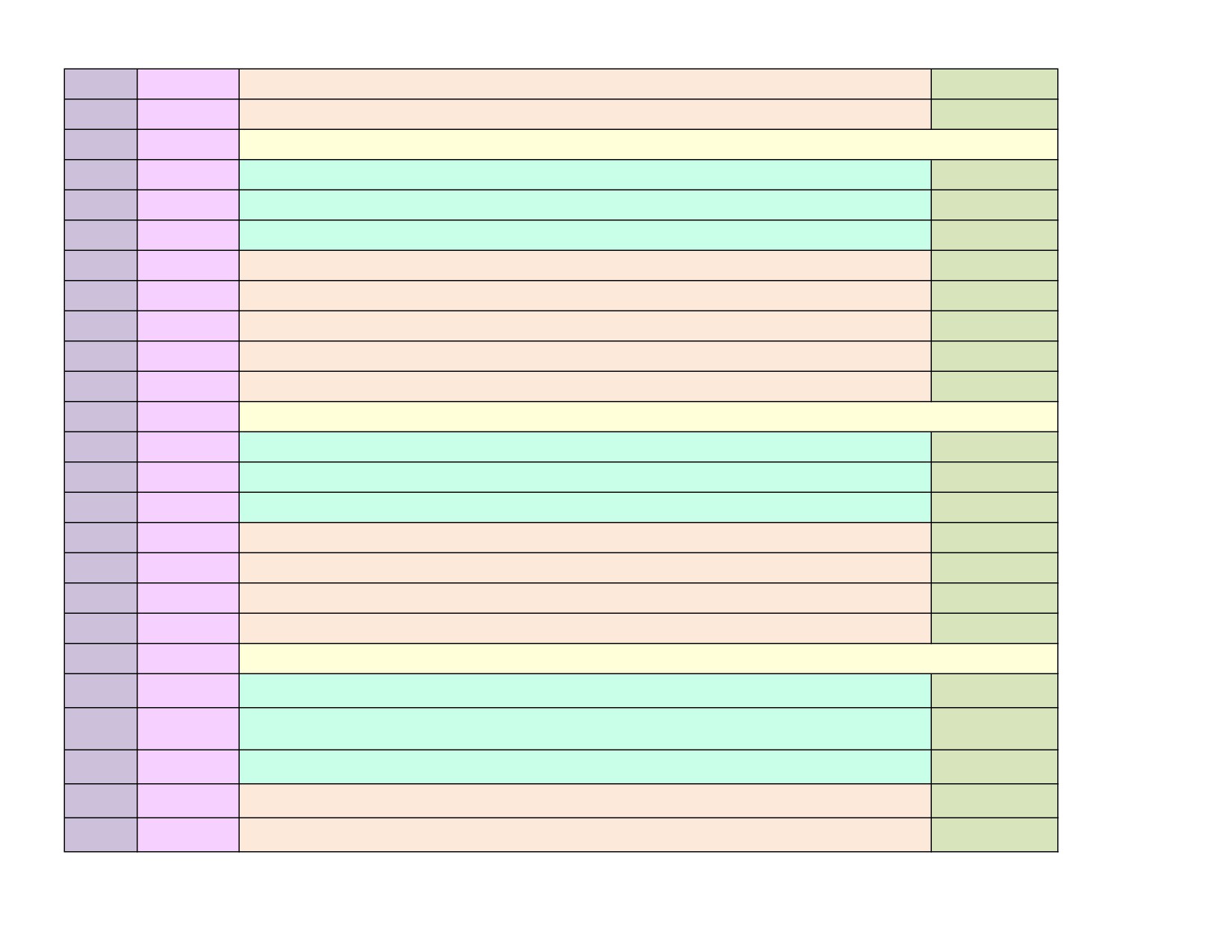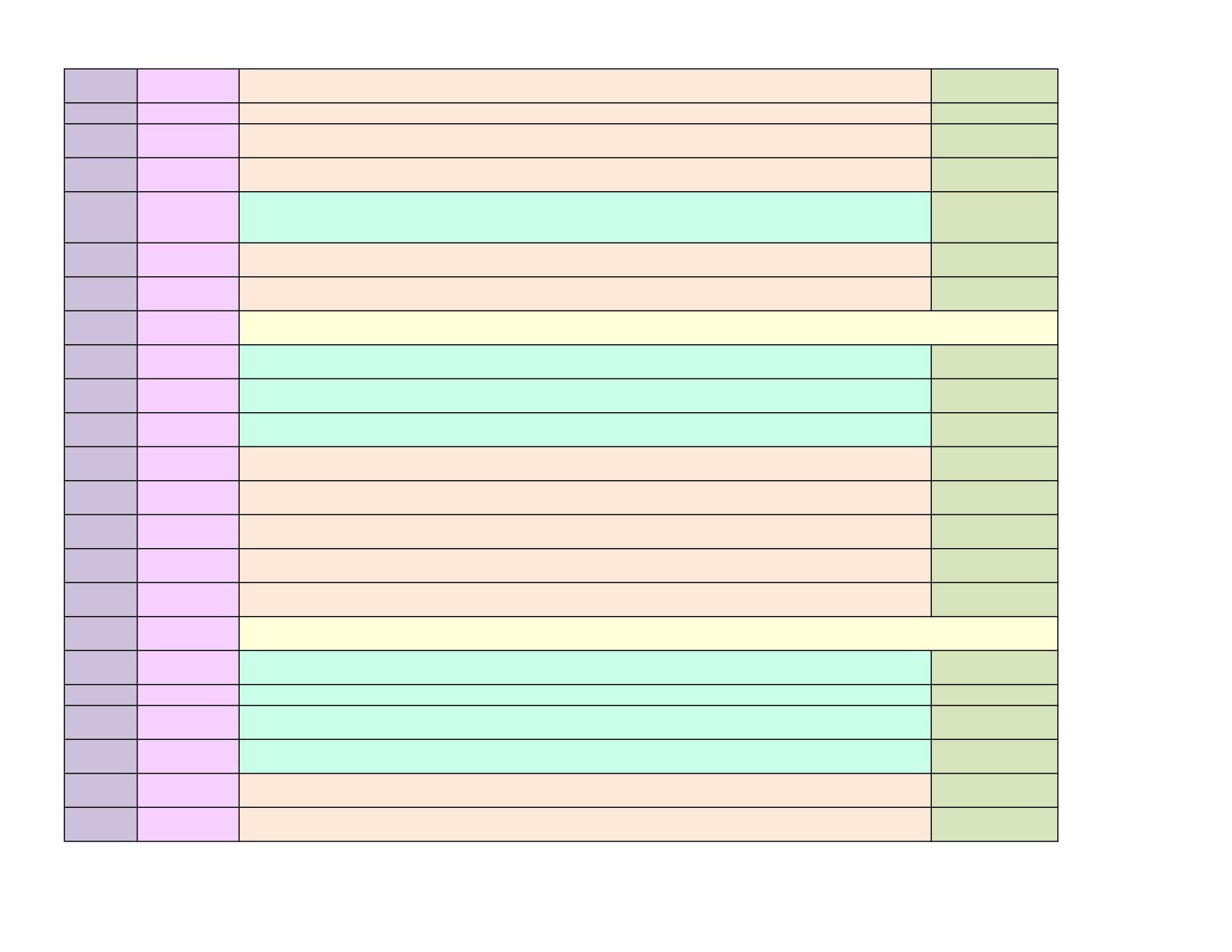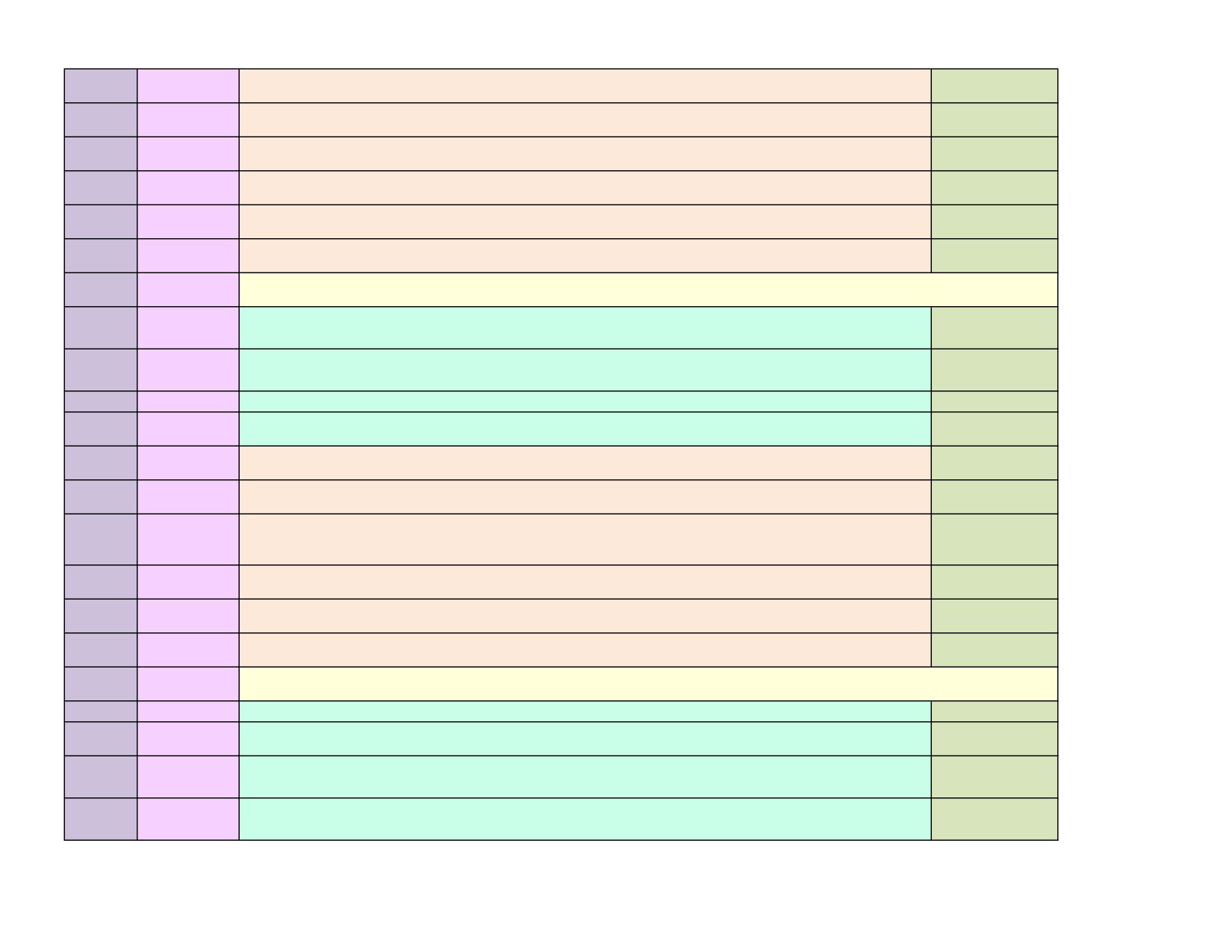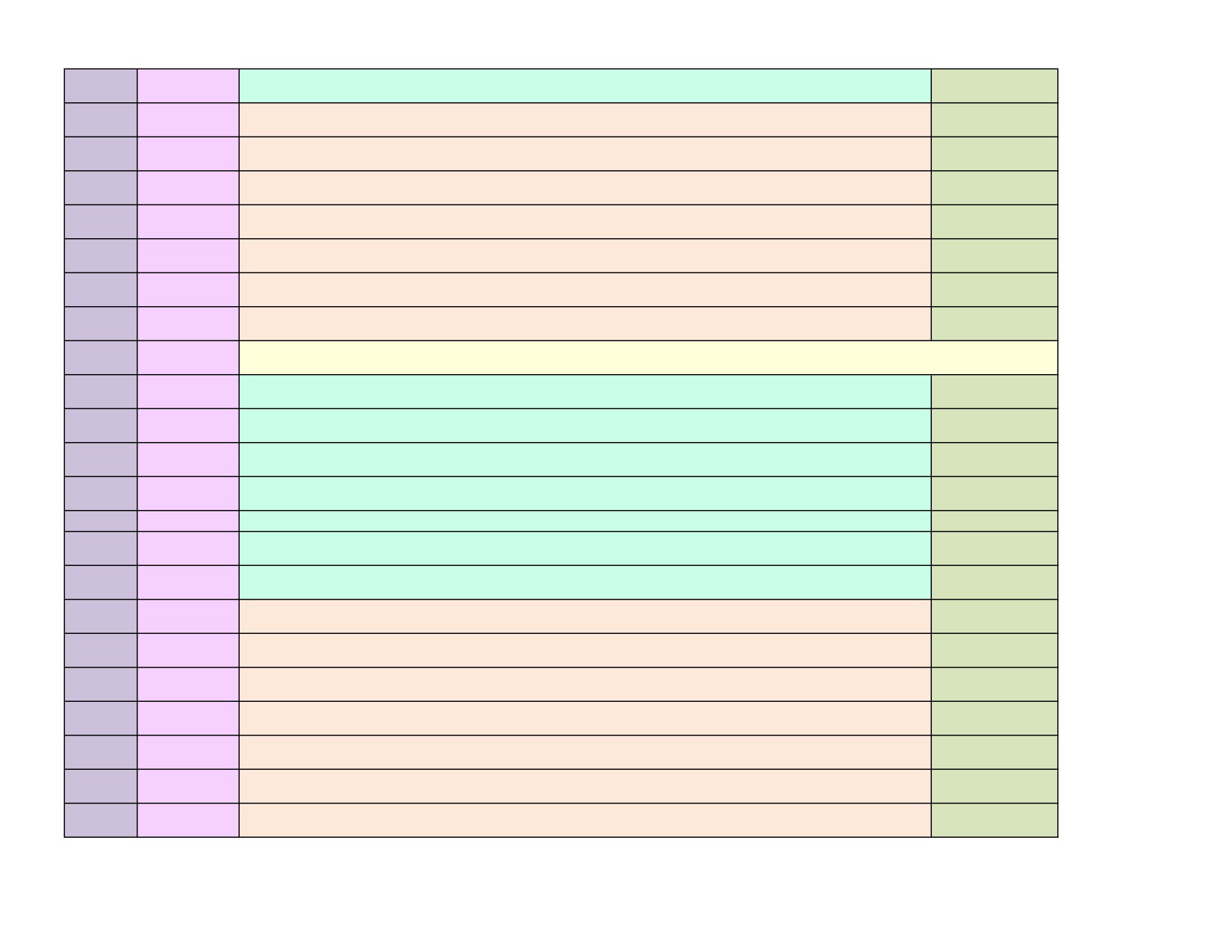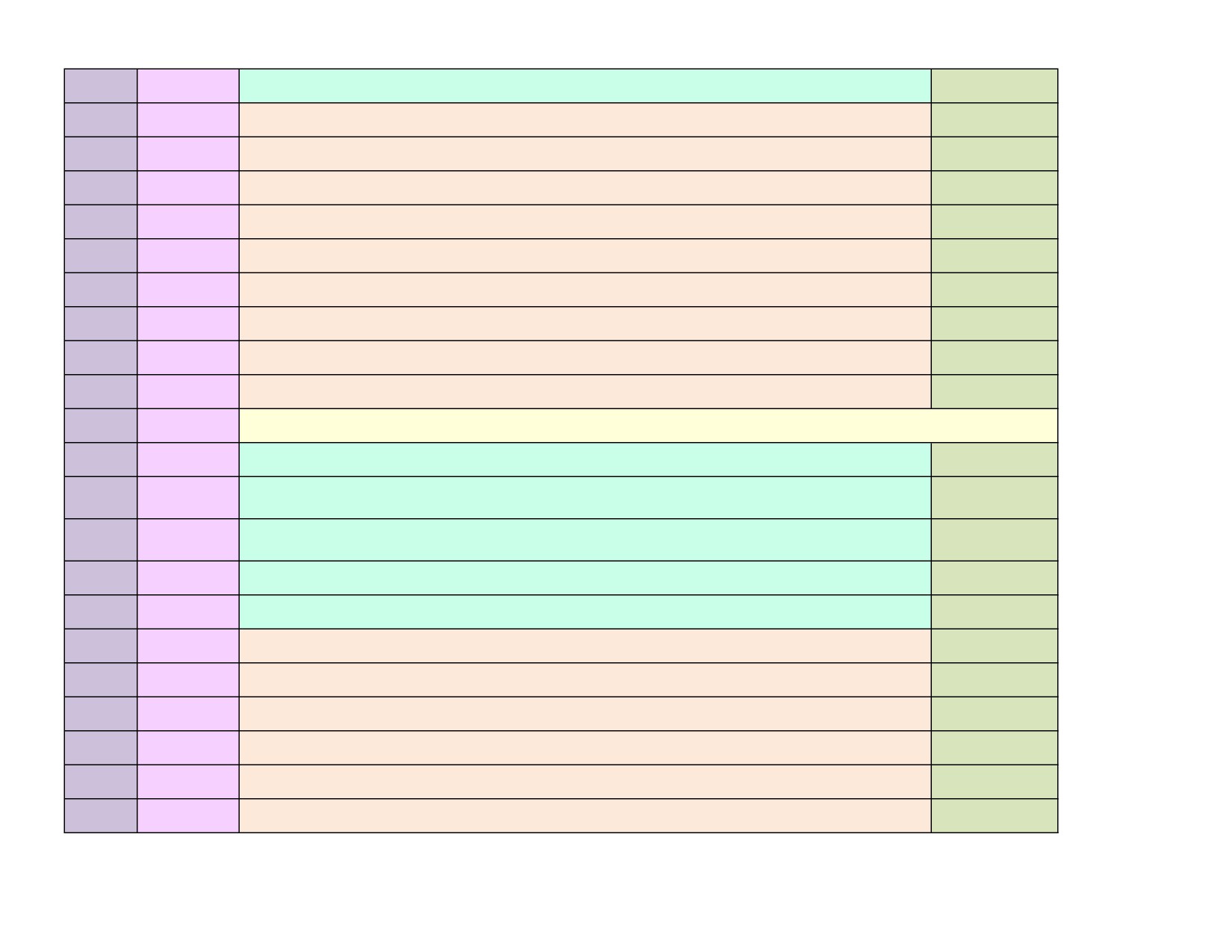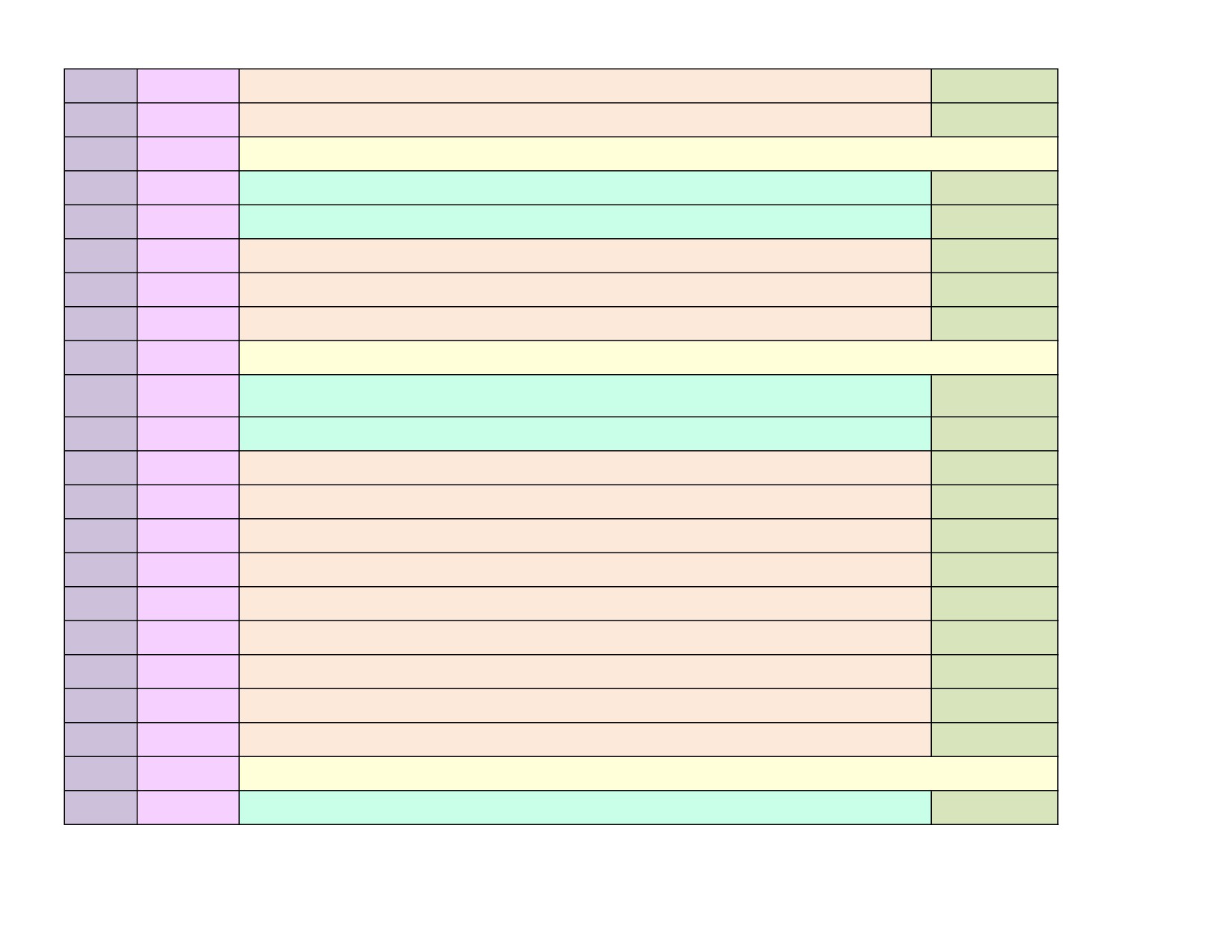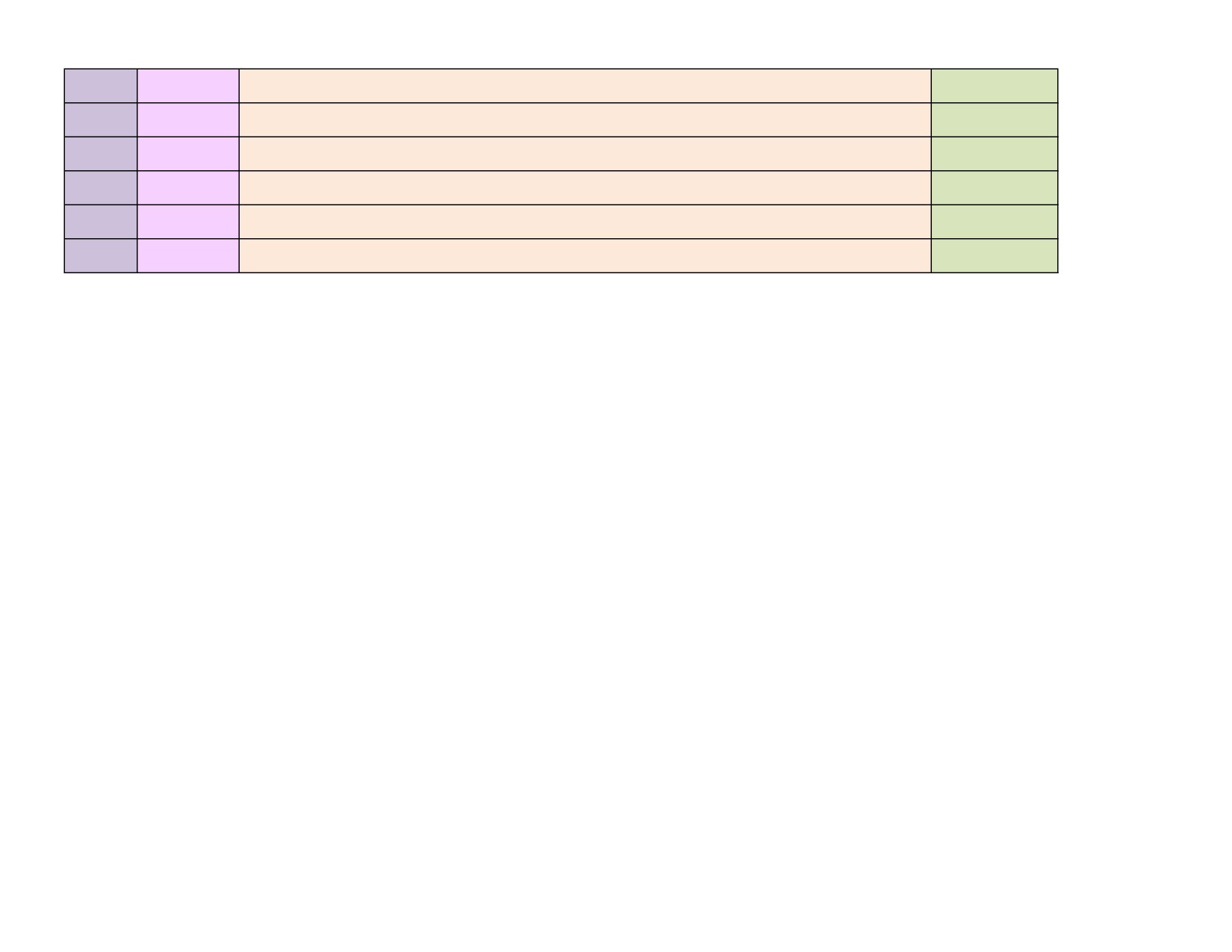Annapoorana Medical College & Hospitals, Salem
Department of Surgery
Phase III Part I Lesson Plan
Lecture
Competency
Topic
Teaching Method
Number
Number
Topic: METABOLIC REPONSE TO SURGERY
describe basic concepts of homeostasis , enumerate the metabolic changes in injury and
SU 1.1
their mediators
OBJECTIVES
1.Basic concepts of homeostasis
1
2.Metabolic changes in injury
LECTURE
SU 1.2
Describe the factors that affect the metabolic response to injury
OBJECTIVES
1.Factors that affect the metabolic responseto injury
2
SU 1.3
Describe the basic concepts of perioperative care
LECTURE
OBJECTIVES
1.Basic concepts of perioperative care
Topic: SHOCK
Describe pathophysiology of shock, types of shock and principles of resuscitation
SU 2.1
including fluid replacement and monitoring .
SU2.2
OBJECTIVES
1.Pathophysiology and types of shock
3
2.Principles of resuscitation of shock
LECTURE
Describe the clinical features of shock and its appropriate treatment
OBJECTIVES
1.Features of shock and its management
Communicate and counsel patients and families about the treatment and prognosis of
4
SU2.3
shock demonstrating empathy and care
ROLE PLAY
OBJECTIVES
1.Communication and counselling skills development
BLOOD AND BLOOD COMPONENTS
Describe the indications and appropriate use of blood and blood products and
5
SU3.1
complications of blood transfusion
LECTURE
OBJECTIVES
1.Indications ,appropriate usage and complications of blood transfusion
6
SU3.2
Observe blood transfusions
BEDSIDE CLINCS .
OBJECTIVES
1.To know how to tranfuse the blood
2. To know the precautions to be taken for transfusing blood
7
SU3.3
Counsel patients and family / friends for blood transfusion and blood donation .
ROLE PLAY
OBJECTIVES
1. Awareness about blood donation .
Topic: BURNS
Elicit document and present history in the case of burns and perform physical examination and
SU4.1 &
8
describe pathophysiology of burns . Communicate and counsel patients and families on the outcome
SU4.4
and rehabilitation , demonstrating empathy and care .
BED SIDE CLINICS
OBJECTIVES
1. History taking in burns
2. Examination of burns patient
3. Documentation in a burns case
4. Communicating and counselling skills to explain about the treatment outcome and rehabilitation
9
SU4.2
Describe clinical features and diagnose type and extent of burns and plan appropriate
LECTURE
treatment .
OBJECTIVES
1.Classifying burns and its appropriate management
SU4.3
Discuss the medicolegal aspects in burn injuries
10
OBJECTIVES
LECTURE
1.Medicolegal aspects of burn injuries
Topic: WOUND HEALING AND WOUND CARE
SU5.1
Describe normal wound healing and factors affecting healing.
SU5.2
Elicit, document and present a history in a patient presenting with wounds
SU5.1,5.2/SLO
Discuss normal wound healing mechanism
Enumerate different types of wounds , of different structures at different sites
Describe various aspects of disordered healing leading to chronic wounds
11
Normal wound healing and factors affecting wound healing
Lecture
12
Clinical examination in a patient with chronic ulcer
BED SIDE CLINICS
Topic: WOUND HEALING AND WOUND CARE
SU5.3
Differentiate the various types of wounds, plan and observe management of wounds
SU5.4
Discuss medico legal aspects of wounds
SU5.3, SU5.4/SLO
Describe variety of scars and their treatment
Enumerate differences between acute and chronic wounds
13
Types of wounds , investigations and management
Lecture
14
medicolegal aspects of wounds
Lecture
Topic: SURGICAL INFECTIONS
SU6.1
Define and describe the aetiology , pathogenesis of surgical infections
SU6.2
Enumerate prophylactic and therapeutic antibiotics plan appropriate management.
SU6.1,SU6.2 / SLO
Enumerate characteristics of common surgical pathogens and their sensitivities
Describe sources of infection and their severity
Discuss surgical infections
Discuss indications and choice of prophylactic and therapeutic antibiotic in surgical infections .
Discuss management of surgical infections
15
Etiology and pathogenesis of surgical infection
Lecture
16
6.2
Propylactic and therapeutic antibiotics in surgical infections and their management
Lecture
17
Incidence of surgical infection in the hospital
SDL
18
Gas gangrene/tetanus/cellulitis
Lecture
Topic: SURGICAL AUDIT AND RESEARCH
SU7.1
Describe the Planning and conduct of Surgical audit
SU7.2
Describe the principles and steps of clinical research in General Surgery
SU7.1,SU7.2 / SLO
Discuss planning and conduct of surgical audit and research
Describe how to write up a project
Discuss the principles and steps of clinical research in General Surgery
19
Planning and conduct of surgical audit
Lecture
20
Principles and steps of clinical research
SDL
Topic: ETHICS
SU8.1
Describe the principles of Ethics as it pertains to General Surgery
SU8.2
Demonstrate Professionalism and empathy to the patient undergoing general surgery
SU8.3
Discuss Medico-legal issues in surgical practice
SU8.1, SU8.2, SU8.3 / SLO
Discuss the principles of ethics in surgery
Enumerate medical error and adverse events
Demonstrate Professionalism and empathy to the patient undergoing general surgery
Discuss patient safety measures .
Describe Medico-legal issues in surgical practice
21
Ethics in surgery
Lecture
22
Adverse events in surgical practice
SDL
23
Medicolegal issues in surgical practice
SDL
Topic: INVESTIGATIONS OF A SURGICAL PATIENT
SU9.1
Choose appropriate biochemical, microbiological, pathological, imaging investigations and interpret
the investigative data in a surgical patient
Biological basis for early detection of cancer and multidisciplinary approach in management of
SU9.2
cancer
SU9.3
Communicate the results of surgical investigations and counsel the patient appropriately
SU9.1, SU9.2, SU 9.3 / SLO
Discuss appropriate investigations and its interpretation
Enumerate early cancer detection and its management
Discuss results of investigation and developing communicatinmg skills with patient
24
Biochemical , microbiological , pathological investigation and interpretation
BED SIDE CLINICS
25
Screening for malignancy and its management
SDL
26
Communicating skills
Role Play
Topic: PRE , INTRA AND POST OPERATIVE MANAGEMENT
SU10.1
Describe the principles of perioperative management of common surgical procedures
SU10.2
Describe the steps and obtain informed consent in a simulated environment
Observe common surgical procedures and assist in minor surgical procedures; Observe emergency
SU10.3
lifesaving surgical procedures.
Perform basic surgical Skills such as First aid including suturing and minor surgical procedures in
SU10.4
simulated environment
SU10.1, SU10.2, SU10.3 SU10.4 / SLO
Discuss various principles in perioperative management during procedures
Discuss the steps to obtain the informed , written consent
Enumerate common surgical procedures in day to day practice
27
Principles in perioperative management during procedures
SGD
28
Steps to obtain the informed , written consent
SGD
29
Common surgical procedures
SGD
30
First aid in practice
SGD
Topic: ANASTHESIA AND PAIN MANAGEMENT
SU11.1
Describe principles of Preoperative assessment.
SU11.2
Enumerate the principles of general, regional, and local Anaesthesia.
SU11.3
Demonstrate maintenance of an airway in a mannequin or equivalent
SU11.4
Enumerate the indications and principles of day care General Surgery
SU11.5
Describe principles of providing post-operative pain relief and management of chronic pain.
SU11.6
Describe Principles of safe General Surgery
SU11.1,SU11.2,SU11.3,SU11.4,SU11.5,SU11.6 / SLO
Describe various types of anaesthesia
Discuss various methods of providing pain relief/ chronic pain
Describe local and regional anesthesia techniques
Discuss the indication and principles of daycare surgery
Discuss various techniques in airway maintenance of a patient
Discuss about the safety in surgery
31
Assessement in anesthesia
SGD
32
Types of anesthesia
SGD
33
A, B, C of anesthesia
SGD
34
Day care surgery
SGD
35
Safety in surgery
SGD
36
Postoperative analgesia and management of chronic pain
SGD
Topic: NUTRITION AND FLUID THERAPY
SU12.1
Enumerate the causes and consequences of malnutrition in the surgical patient
Describe and discuss the methods of estimation and replacement of the fluid and electrolyte
SU12.2
requirements in the surgical patient
Discuss the nutritional requirements of surgical patients, the methods of providing nutritional support
SU12.3
and their complications
SU12.1, SU12.2, SU12.3 / SLO
Describe causes and consequences of malnutrition
Discuss various fluid and electrolyte requirements in surgical patient
Describe nutritional requirement in a surgical patient
Describe various methods of providing nutritional support
37
Malnutrition in surgery
SGD
38
Fluid and electrolyte balance
Lecture
39
TPN
SGD
Topic: TRANSPLANTATION
SU13.1
Describe the immunological basis of organ transplantation
Discuss the Principles of immunosuppressive therapy.Enumerate Indications, describe surgical
SU13.2
principles, management of organ transplantation
SU13.3
Discuss the legal and ethical issues concerning organ donation
SU13.4
Counsel patients and relatives on organ donation in a simulated environment
SU13.1,SU13.2,SU13.3,SU13.4 / SLO
Discuss HLA and MHC complex and their role in transplantation
enumerate principles and indications for transplantation
Describe about the causes of graft dysfunction
Discuss about the litely outcome after transplantation
40
Immunoogical basics of organ transplantation
Lecture
41
Immunosupressive thearpy
Lecture
42
Indications srgical principles and management of organ transplantation
Lecture
43
Medico legal issues in transplantation
SGD
44
Counselling on organ donation
SGD
Topic: BASIC SURGICAL SKILLS
SU14.1
Describe Aseptic techniques, sterilization and disinfection.
SU14.2
Describe Surgical approaches, incisions and the use of appropriate instruments in Surgery in general
Describe the materials and methods used for surgical wound closure and anastomosis (sutures, knots
SU14.3
and needles)
SU14.4
Demonstrate the techniques of asepsis and suturing in a simulated environment
SU14.1,SU14.2,SU14.3,SU14.4 / SLO
Discuss various Principles in sterilisation and disinfection
Describe principles of skin and abdominal incisions
Describe principles of wound closure
Demonstrate technique of suturing under aseptic condition
45
Sterlisation and disinfection
SGD
46
Surgical incision and approaches and instrument in surgery
SGD
47
Wound closure and anastomosis in surgery
SGD
48
Aseptic precautions in surgery
SGD
Topic: BIOHAZARD DISPOSAL
SU15.1
Describe classification of hospital waste and appropriate methods of disposal
SU15.1 / SLO
List out the hospital waste , seggregation and appropriate methods of disposal
49
Classification and appropriate methods of safe disposal
SGD
50
field visit
SGD
Topic: MINIMALLY INVASIVE GENERAL SURGERY
Minimally invasive general surgery : describe indications advantages and disadvantages of minimal
SU16.1
invasive general surgery
SU16.1 / SLO
Elicit principles of laparoscopic and robotic surgery
Differntiate advantages and disadvantages of laparoscopic surgery
discuss safety issues and indications in laparoscopic surgery
List out principles of postoperative care
51
Principles of minimal invasive surgery
Lecture
52
Indications and contraindications for minimal invasive surgery
Lecture
53
Surgical procedures - minimal invasive surgery
SGD
54
Robotic surgery
Lecture
55
Recent advances in minimal invasive surgery
SGD
Topic: TRAUMA
SU17.1
Describe the Principles of FIRST AID
SU17.2
Demonstrate the steps in Basic Life Support. Transport of injured patient in a simulated environment
SU17.3
Describe the Principles in management of mass casualties
SU17.4
Describe Pathophysiology, mechanism of head injuries
SU17.5
Describe clinical features for neurological assessment and GCS in head injuries
SU17.6
Choose appropriate investigations and discuss the principles of management of head injuries.
Describe the clinical features of soft tissue injuries. Choose appropriate investigations and discuss
SU17.7
the principles of management.
SU17.8
Describe the pathophysiology of chest injuries
SU17.9
Describe the clinical features and principles of management of chest injuries
Demonstrate Airway maintenance. Recognize and manage tension pneumothorax, hemothorax and
SU17.10
flail chest in simulated environment.
SU17.1 - SU 17.10 / SLO
Elicit importance of time in trauma management
Enumerate the steps to assess the trauma patient
Elicit techniques in basic life support management
Elicit techniques in advance cardiac life support
Discuss about principles in mass casualty managemnt
Discuss about pathophysiological response to trauma
to enlist investigative modalities for traumas
Describe pathophysiology of chest injuries
Demonstarte importance of ABC in trauma care management
List out principles of management in chest injuries
Discuss clinical features and management of soft tissue injuries
56
First AID in trauma
SGD
57
Basic life support and advanced cardiac life support
SGD
58
Pathophysiology , mechanism and assessement in head injuries
Lecture
59
Management of head injuries
Lecture
60
Mechanism , clinical features and managemnt in blunt chest injuries
Lecture
61
Mechanism , clinical features and managemnt in penetrating chest injuries
Lecture
62
Spleen and liver injuries
Lecture
63
Retroperitoneal injuries
Lecture
64
Hallow viscus injuries ( bowel , stomach )
Lecture
65
Pathophysiology , clinical features and investigations in soft tissue injuries
SGD
66
Management of soft tissue / crush / degloving injuries
SGD
67
Pelvic injuries
SGD
68
Urinary tract injuries
SGD
69
Management of mass casualty / disaster management
SGD
Topic: SKIN AND SUBCUTANEOUS TISSUE
Describe the pathogenesis, clinical features and management of various cutaneous and subcutaneous
SU18.1
infections
SU18.2
Classify skin tumors differentiate different skin tumors and discuss their management
Describe and demonstrate the clinical examination of surgical patient including swelling and order
SU18.3
relevant investigation for diagnosis. Describe and discuss appropriate treatment plan.
SU18.1,SU18.2,SU18.3 / SLO
List out structural and functional properties of skin
Classify vascular lesions of skin
Elicit cutaneous manifestations of systemic diseases
Classify benign skin lesions
Enumerate types of cutaneous malignancy and its management
70
Skin and subcutaneous infections
Lecture
71
Physical signs and investigation of a patient with ulcer
DOAP
72
SCC / BCC
Lecture
73
Malignant melanoma
Lecture
74
Vascular lesions of skin
SGD
75
Types of skin graft / flap and skin transplant
SGD
